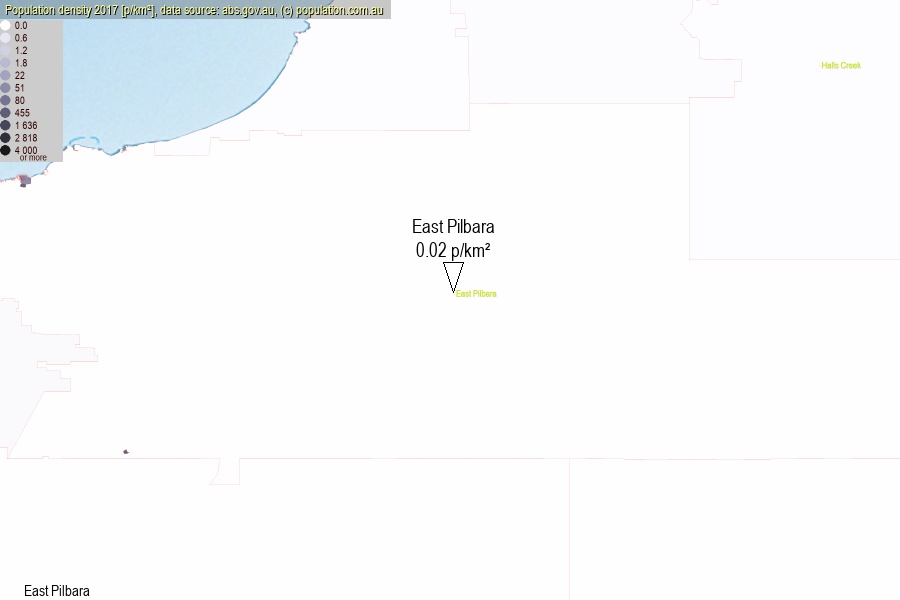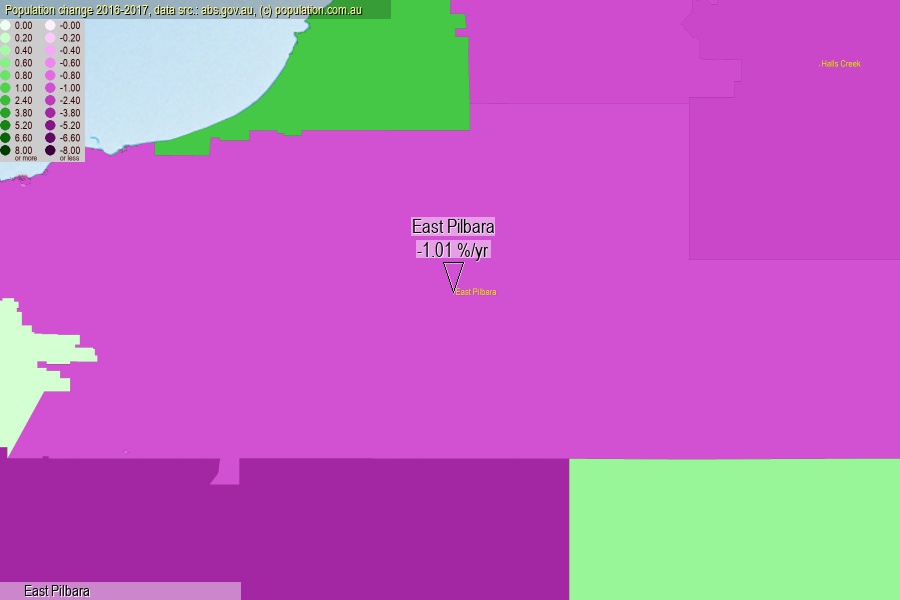 population.com.au
population.com.auLast official estimated population of East Pilbara (as Statistical Area Level 2) was 6 789 people (on 2017-06-30)[2]. This was 0.03% of total Australian population and 0.262% of WA population. Area of East Pilbara is 390 590.30 km², in this year population density was 0.02 p/km² . If population growth rate would be same as in period 2016-2017 (-1.01%/yr), East Pilbara population in 2025 would be 6 261. [0]



Click to enlarge. East Pilbara is located in the center of the images.
Population [people], population density [p./km²] and population change [%/year] [2]
View borders » (new window) [4]
[2001-2002] +9.83 %/Yr.
[2002-2003] +9.14 %/Yr.
[2003-2004] +10.32 %/Yr.
[2004-2005] +9.17 %/Yr.
[2005-2006] +8.88 %/Yr.
[2006-2007] +14.62 %/Yr.
[2007-2008] +15.71 %/Yr.
[2008-2009] +14.74 %/Yr.
[2009-2010] +8.96 %/Yr.
[2010-2011] +8.60 %/Yr.
[2011-2012] +2.91 %/Yr.
[2012-2013] +2.17 %/Yr.
[2013-2014] -1.65 %/Yr.
[2014-2015] -1.93 %/Yr.
[2015-2016] -2.11 %/Yr.
[2016-2017] -1.01 %/Yr.
[0] Calculated with linear interpolation from officially estimated population
[1] Read more about SA2 and Australian Statistical Geography Standard (ASGS) on abs.gov.au
[2] Population data from Australian Bureau of Statistics (Population and density: 2017; change: 2016-2017)
[3] Digital Boundaries: Australian Statistical Geography Standard (ASGS) 2016.
[4] Border coordinates are simplifyed using Ramer-Douglas-Peucker algorithm.